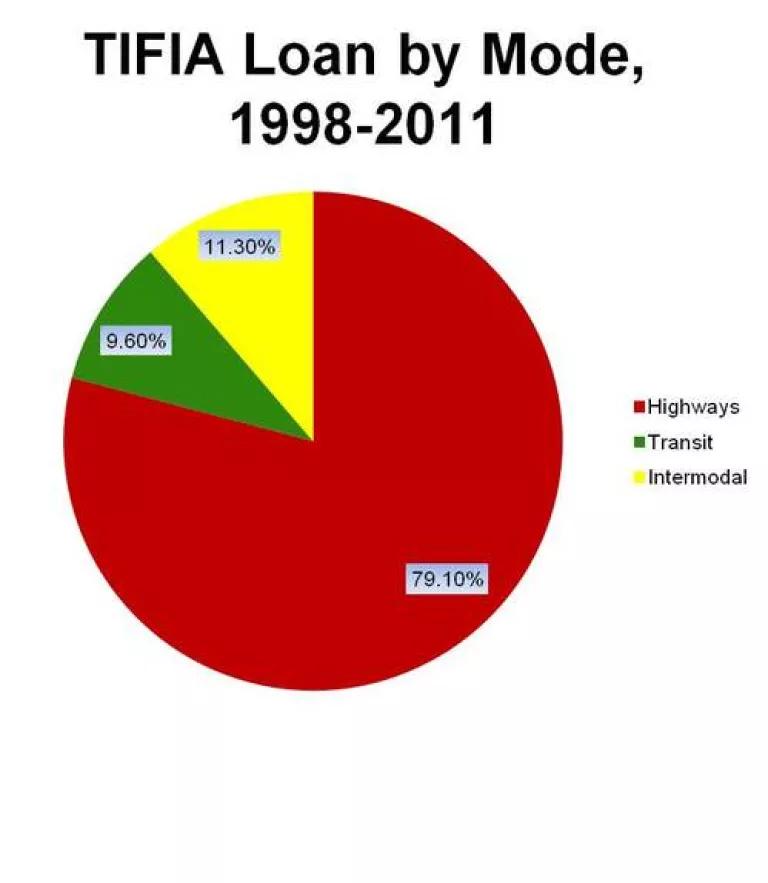The single most dramatic expansion of funding in MAP-21 is for federal loans provided through the Transportation Infrastructure Finance and Innovation Act (TIFIA), and public transit agencies should move fast and furiously to submit applications for projects that can help secure the future of public transportation.
This program is popular on both sides of the aisle because it provides loans (rather than grants) to states and regions that work to mobilize private sector investment for projects. This year, $122 million was made available for transit loans; in 2013 the figure leaps to $750 million and then to $1 billion in 2014. According to Transportation Secretary Ray LaHood, each dollar of Federal funds can provide up to $10 in TIFIA credit assistance and leverage $30 in transportation infrastructure investment.
Funds will be allocated as “first-come, first-served” and the bar is set high for credit worthiness, which is certain to be key in determining recipients and could potentially effect how quickly applicants can fulfill the requirements.
This program was created in the 1998 transportation law to grant loans to state, regional or transportation infrastructure projects at very low interest rates and sensible repayment terms. The substantial funding increase is largely due to the successful advocacy of Mayor Antonio Villaraigosa of Los Angeles and his Fast Forward Campaign to help fund the landmark 30-10 plan in southern California, which aims to frontload 30 years worth of public transportation expansion into just a decade.
We also have a prime example of innovative financing of transit expansion here in D.C.: private businesses chipped in several million dollars for the construction of the New York Avenue Station on the Washington Metro system. Engaging in “value capture” like this is a no brainer—if private businesses stand to earn a windfall of profits through the development of say a new transportation stop, then it seems obvious they chip in to pay for their fare share of the project.
In a commentary I wrote for the American Public Transportation Association’s (APTA) newsletter I laid out some of my concerns with the new program, my foremost being that Congress saw fit to eliminate useful performance criteria as a factor in determining TIFIA projects. Phineas Baxandall of U.S. PIRG echoes this complaint on streetsblog this week, rightly dubbing this a bad move for a program that used to have livability and sustainability criteria underpinning it before Congress stripped those in MAP-21. I recommend reading Phineas’ post since it includes 5 specific pieces of advice that would ensure that an expanded TIFIA does more good than harm to the environment.
It’s also important for APTA, mayors and other leaders who rely on public transportation service to move quickly to capitalize on TIFIA expansion; recommendations like Phineas’ and mine would help level the playing field for project selection but are a moot point if a paltry number of transit proposals are submitted to DOT. I urge that APTA or DOT’s Federal Transit Administration provide a template or guide on how to write and submit a successful TIFIA application.
Given mobility needs in our growing metro regions, the program should deliver a more balanced mix of road and public transit projects. The track record is lackluster in this respect – since TIFIA’s inception, 80% of funding has gone to finance highway projects, mostly toll roads. More funding should go towards new rail lines, or other creative public transportation projects.

Unfortunately, Politico reported that 19 projects have submitted letters of interest for the latest round of TIFIA financing assistance, totaling $27.5 billion, and two of those would be the most expensive TIFIA-assisted infrastructure yet: the Tappan Zee Bridge replacement in New York and the Silver Line Metro extension into Northern Virginia.
Transit agencies should be aggressive in applying for this funding and get to work to build or improve upon good public transit options.



